KRISS Reveals Limitations of Toxicity Assessment of Nanomaterials Used in Cosmetics and Food
- Writerkrissadmin
- Date2022-11-10 00:00
- Hits379
KRISS Reveals Limitations of Toxicity Assessment of Nanomaterials Used in Cosmetics and Food
- Limitations of nanomaterial toxicity assessment revealed for the first time using a three-dimensional cell culture system –
- Expected to improve accuracy of toxicity assessment in the fields of medicine, chemistry, and food –
# Silica nanoparticles, which help in pore care by adjusting sebum secretion, are widely used in cosmetic products. The reactions of human body cells should be examined to assess the safety of nanomaterials.
The Korea Research Institute of Standards and Science (KRISS, President Hyun Min Park) revealed the limitations of cell culture systems used in assessing the toxic effects of nanomaterials on the human body.
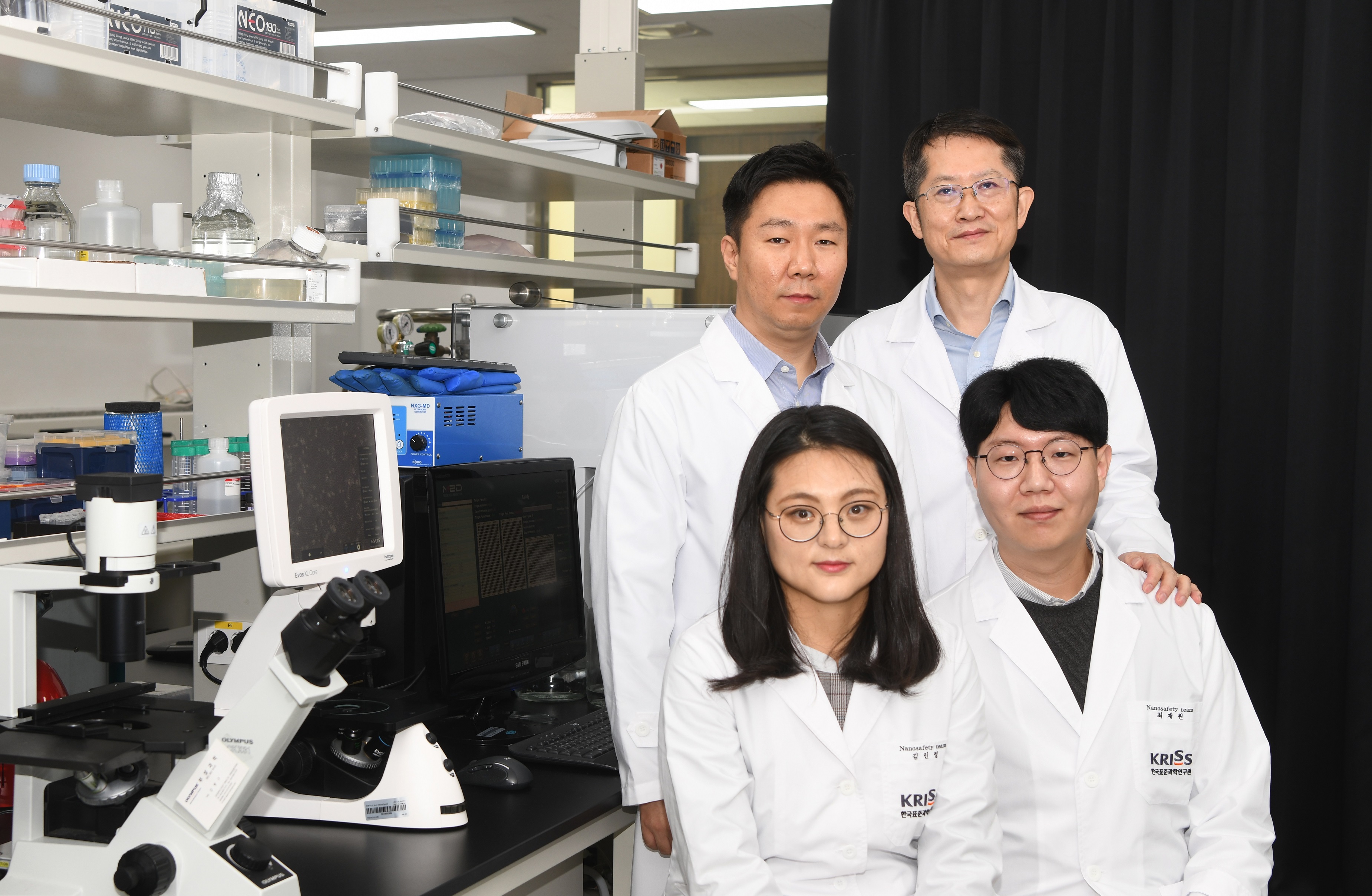
▲ KRISS researchers (from the left of the back row to the clockwise direction, Principal Research Scientist Min Beom Heo, Vice President Tae Geol Lee, student researcher Jae Won Choi and post-doc researcher In Young Kim)
Nanomaterials have vast applications in medicine, chemistry, and food. Specifically, silica nanoparticles (silicon dioxide, SiO2) are widely used in cosmetics, food additives, and drug delivery systems. Since nanomaterials can cause various diseases when accumulated in the human body, toxicity assessments must be carried out to ensure they are used in safe amounts.
While toxicity assessments can be performed through animal experiments, growing concerns over the ethical use of animals have led to cell culture systems becoming more widespread. In a cell culture system, cells originating from humans are cultured in an environment similar to the human body, and nanomaterials are processed to determine toxicity effects.
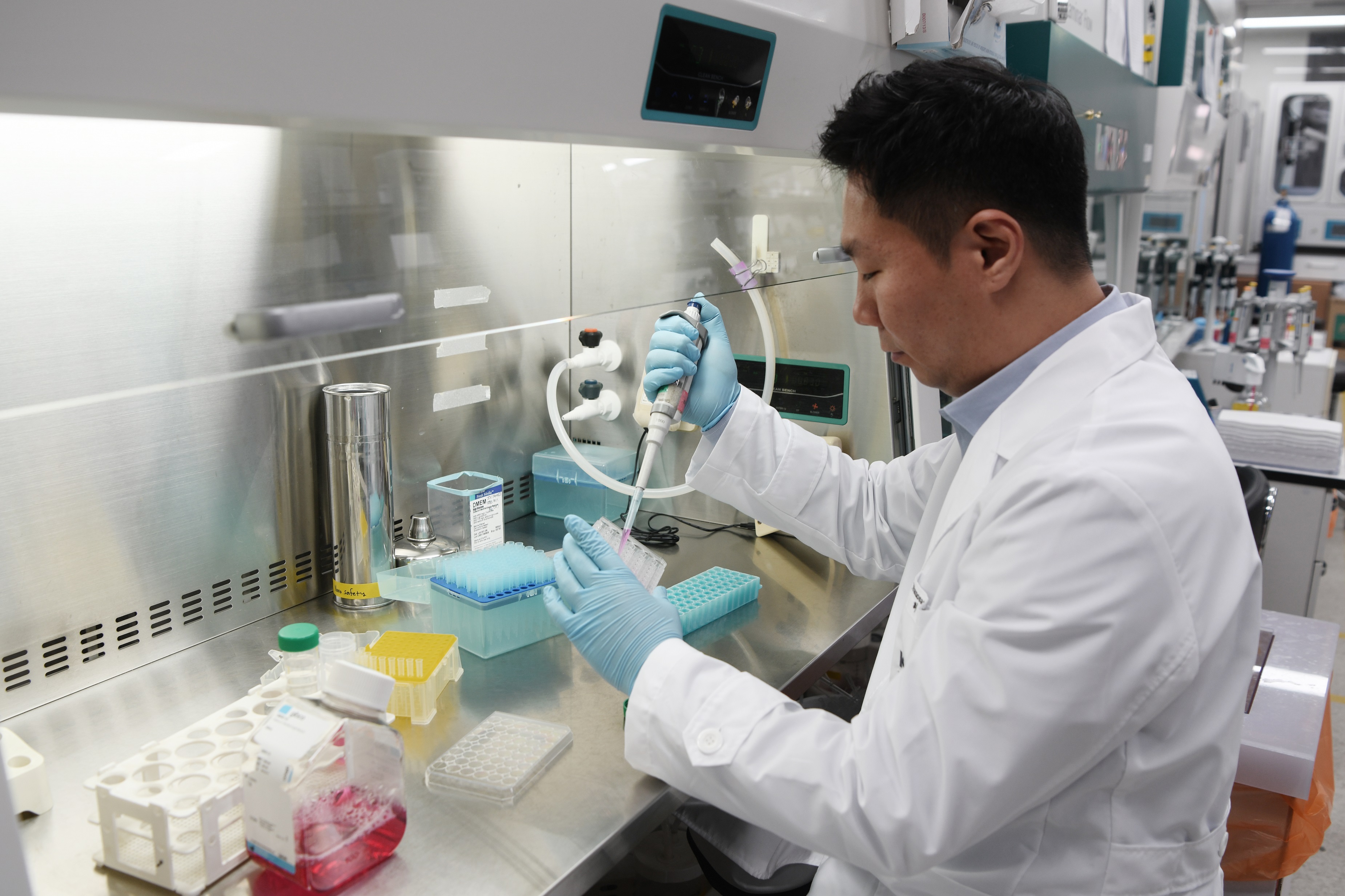
▲ Min Beom Heo, Principal Research Scientist at KRISS, is exposing nanomaterials to cells.
Two-dimensional cell culture systems have been the norm, but three-dimensional systems are being rapidly adopted as they offer an environment more similar to the human body. Three-dimensional systems are composed of human body cells, an extracellular matrix that surrounds and supports such cells, and essential nutrients for growth. A good example is organoids, which are derived from stem cells and mimic the structure and function of human organs.
The Nano-safety Team of the KRISS Safety Measurement Institute showed that the extracellular matrix used in a three-dimensional culture interferes with the penetration of nanomaterials, making it difficult to accurately assess toxicity.
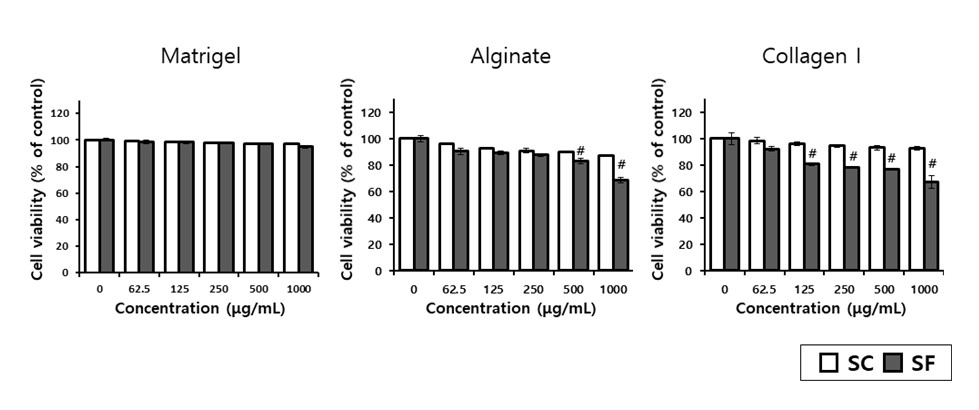
▲ Results of nanomaterial toxicity assessment using 3 types of extracellular matrix
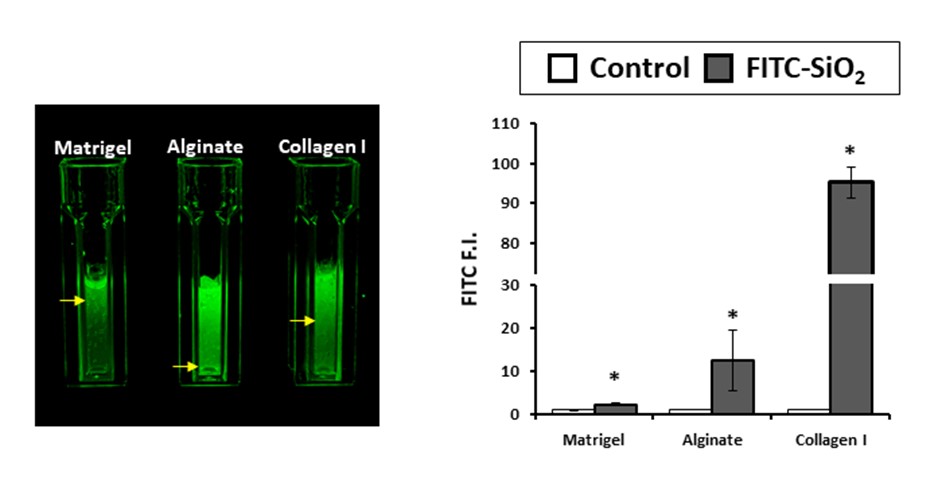
▲ Results of Permeability Analysis of Fluorescent Silica Nanomaterials
The research team established a three-dimensional cell culture system using three extracellular matrices, namely, Matrigel, alginate, and collagen type I, and exposed the system to silicon dioxide. Microscopic observations revealed that the silicon dioxide adhered to the scaffolds without reaching the cells. In addition, the results of toxicity assessments were different depending on the scaffold type.
The team’s study is the first to reveal the limitations of nanomaterial toxicity assessment using a three-dimensional cell culture system. With ISO’s recent development of a standard safety assessment method for nanomaterials using three-dimensional cell culture systems, the results are expected to have useful applications in the future.
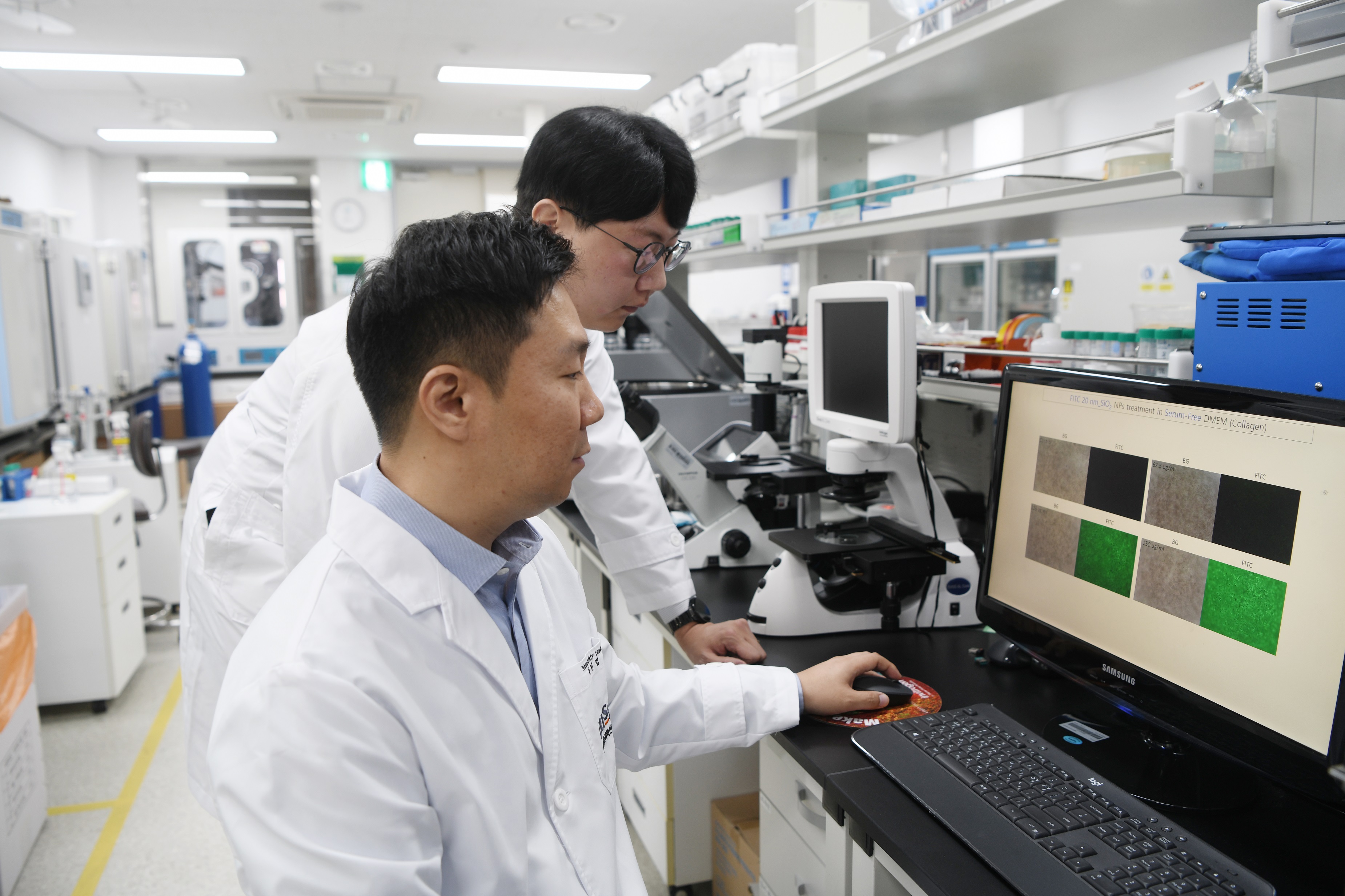
▲ KRISS researchers are confirming the results of adsorption analysis of nanomaterials and extracellular matrix.
Principal Research Scientist Min Beom Heo said, “Our findings will serve as a useful reference in nanomaterial toxicity assessment using three-dimensional cell culture systems. We will conduct further research to develop more accurate and reliable methods of toxicity assessment.”
Funded by the Ministry of ICT and KRISS, the study was published in Sensors and Actuators B: Chemical (IF: 9.221), a leading journal in the field of chemical sensors, in October.

